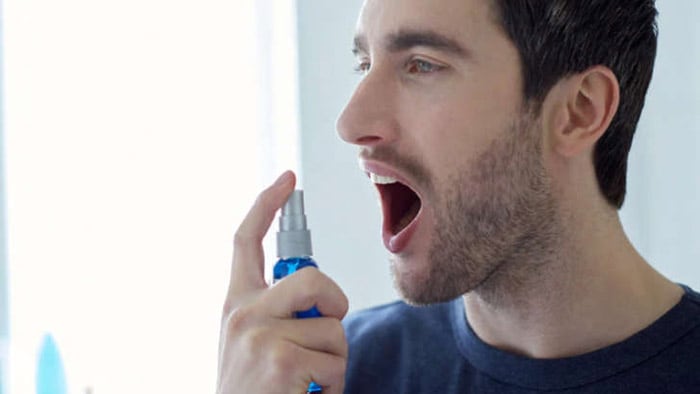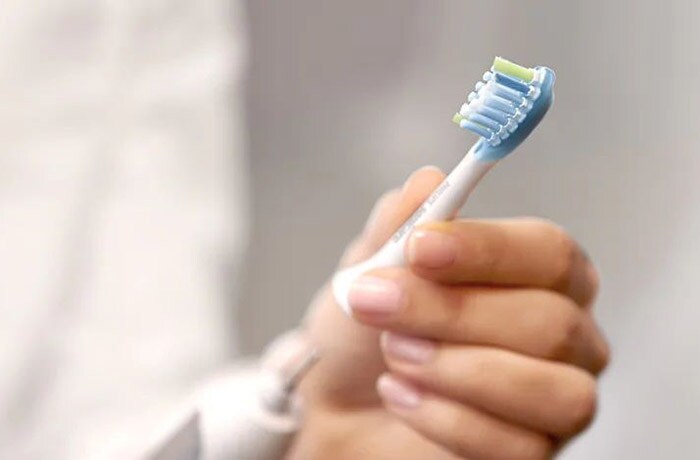
Bad breath: 3-steps for how to fix bad breath

When you imagine the ultimate Hollywood smile, sparkling white teeth may come to mind. But that’s all there is to it. Our gums play an equally important part when it comes to our oral health, aesthetics, and the overall health of our body. Maybe you’re already taking the essential steps to care for your teeth, but do you know what healthy gums look like and how to heal sore gums? Here we’ll delve into the basics of gum care. We’ll share everything you need to know from the importance of healthy gums to how to strengthen gums. We’ll also talk through key steps for proper and efficient gum care, including: Read on to discover our simple guide to gum cleaning and overall gum care, along with the answers to questions you might have been wondering about. For example, do gums heal?
Before we talk about the ins and outs of gum care, we need to have a brief look at why healthy gums are so important. There are a few key reasons you should pay particular attention to oral health, especially gum cleaning:1 While certain medications, stress, smoking and a lack of vitamins are all contributing factors to poor oral health, a lack of gum care not only causes bad oral health, but studies have shown it can cause heart disease, too.9,10
In 2023, Philips has partnered with the Swedish Heart Lung Foundation for its ‘Brush for your Heart’ campaign to raise awareness about the connection between oral healthcare and heart health. The campaign emphasizes that individuals who take good care of their mouth are more likely to have healthier hearts than those who neglect their teeth and gums.9,10
Studies have shown that individuals with periodontitis, or gum disease, are at risk of heart disease and other heart problems. Although further research is being done to understand the connection between oral health and heart health, there is a growing consensus about this link.11 However, public awareness of this connection remains low, with over 60% of respondents to one of our surveys being unaware of the link between good oral health and heart disease.12
Poor oral healthcare, such as inadequate brushing of teeth, can lead to a build-up of plaque and harmful bacteria in the mouth, which can cause gum disease.1 However, it is now believed that these bacteria can also enter the bloodstream and potentially cause problems in other parts of the body, including the heart, stomach, and toes.13
To maintain healthy gums and reduce the risk of heart disease, individuals should prioritize good oral healthcare practices, such as regular brushing, flossing, and using mouthwash. Electric toothbrushes, like those offered by Philips Sonicare, can remove up to 10 times more plaque than manual toothbrushes and are an effective way to stay on top of oral healthcare. Over 70% of consumers believe that Philips Sonicare can help them improve their oral health, and over 75% of consumers said they would switch to an electric toothbrush.12
Individuals can reduce their risk of gum disease and maintain healthy gums by following simple steps, such as brushing teeth twice a day with fluoride toothpaste, flossing regularly, and quitting smoking. Additionally, regular dental check-ups and professional cleaning can help prevent and treat gum disease.
Now you know why it is so important to keep up with your gum cleaning and overall gum care, but do you know how to spot unhealthy gums? Any of the following symptoms can indicate that you need to seek help to heal your gums: Do gums heal on their own? Unfortunately, you can’t reverse receding gums which is why prevention is so important. Once gums are damaged, it’s not possible to reverse the damage. However, if you suffer from any of the above symptoms, visit your dentist, who will present you with the best methods to tackle the damage and prevent it from becoming more extensive.

As we have shown, efficient gum care is a necessity if you want to maintain healthy gums and teeth. Thus, it’s very important that you and your family not only care for your teeth but also maintain your gums. Here are our top tips for effective and appropriate gum care: So, whether you’re wondering how to heal sore gums, simply want to strengthen your gums or learn more about gum deep cleaning to protect them from damage, the correct gum care is the way to go. In this guide, we’ve shown you healthy gums are important for both healthy teeth and a healthy body. Now it’s time to make daily and attentive oral hygiene a part of your routine so that you and your family can enjoy a healthy smile together.